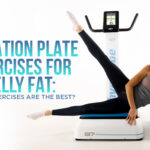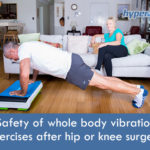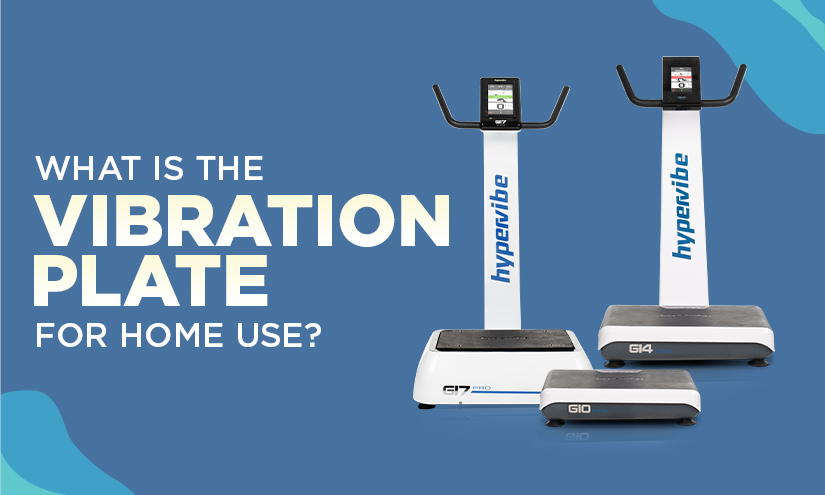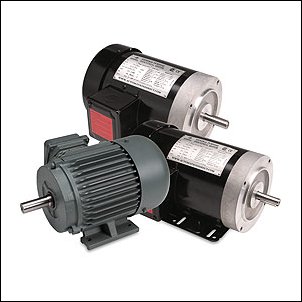How to Choose the Right Vibration Plate for You
With so many different types of vibration plates on the market for home use, your head might spin (or shake!). Each different type comes with its characteristics such as frequency and amplitude, range of motion, and benefits for the body. This is why it’s sometimes hard to choose between linear, tri-planar, and pivotal vibration plates.
As such, this article covers each of these three types and goes into detail about what you can expect to help you make the best decision for yourself and your health and fitness goals. Keep reading to find out more!
Linear vibration plates
The first vibration plate that we will take a look at is the linear type. Why is it called linear? It’s because it moves in a straight line, generally in an up-and-down motion. When you are going up and down, the frequency is generally higher than other vibration plates. And as for frequency, refers to how many times per second the plate moves up and down. A 30 Hz frequency means 30 movements per second. Although they offer a smaller range of motion, they tend to have a higher impact. However, there are other defining characteristics. Let’s take a look.
- Frequency: although most linear plates are designed with a frequency range of 15 Hz to 40 Hz, the frequency can increase as high as 60 Hz. As such, it is considered a high-frequency machine. However, whereas some run on a fixed frequency, others can run on an adjustable frequency.
- Amplitude: this refers to the maximum movement of the machine. In most cases, for the linear type, the amplitude is around or below 3 mm. It is therefore considered a low-amplitude vibration plate. Depending on the machine you are looking at, you can also get one that comes with an adjustable amplitude whereas other models may offer a fixed amplitude (high and low amplitudes).
- Design and structure: the actual platform that a person would stand on with a linear plate is supported by an “eccentric” wheel device and supporting springs. These create a forced vibration. This is one of the most common ways to produce a vibration.
- Vibration direction and distribution: as opposed to other types of vibration machines, the direction of the vibration is in a vertical, oval path. Instead of moving horizontally or laterally, the plate moves upwards and downwards. Furthermore, the distribution of the vibration is generally considered quite even across the entire platform and this means that a wide range of exercise poses can be accommodated.
- Muscle impact: because of the smaller range of motion with these machines, there is a greater level of muscle contraction as a result of the resonance effect. Therefore, muscle contraction is considered intensive because the vibration energy is transmitted deep into the tissue. In addition, intensive skeletal muscle contraction is beneficial for enhancing muscle and bone strength.
- Side effects: due to the vertical motion that tends to be transmitted to the upper body and head, using a linear machine can cause nausea and dizziness. Studies have shown this to be the case when compared to other types of vibration plates.
- Noise levels: these vibrating machines generally emit higher levels of noise than the other two types, which are discussed below.
Tri-planar vibration plates
Tri-planar vibration plates are a close cousin to the linear types. They are often referred to as a linear platforms. But there is a difference between the two and that difference lies in the way in which the platform is driven. Although they produce a similar feel, the motors and pulley systems are quite different from each other.
- Frequency: the frequency range is usually quite high meaning that your muscles contract much faster and you’ll feel as though you’ve had quite a tough workout in just a couple of minutes. This is why they are considered good for building muscle strength and bone health.
- Amplitude: the amplitude of these machines can range anywhere from 2 mm to 4 mm.
- Design: these machines are a recent addition to the market using relatively new technology. As such, they often allow for greater weight capacity as well as more features and functions.
- Range of motion: perhaps the reason why the tri-planar vibration machine is called what it is is because of its range of motion. It moves vertically up and down. However, it also moves horizontally. In essence, you are looking at an almost circular movement that goes up and down and this is why it’s called a “spiral” vibration.
- Muscle impact: because of the range of motion and design of this vibration platform, users often get the benefits of muscle building that a linear machine offers, however, without the wear and tear on the joints. Apart from muscles, these machines are also good for weight loss, muscle toning, detoxification, and better bone density. It enables dynamic exercises including lunges, squats, and press-ups.
- Side effects: much like the linear platforms, these also create quite a strong head vibration that may cause dizziness.
Pivotal vibration plates
We now turn to pivotal vibration plates. These may be considered the opposite of the linear kind because their range of motion is completely different. Consequently, there are different effects on the body when working out. They are also called low-frequency, high-amplitude vibration plates and you’ll find out why below.
- Frequency: pivotal vibration plates are considered low-frequency vibration machines because they vibrate at a slower rate. Whereas linear types of platforms shake at up to 60 Hz per second, these machines’ frequency generally ranges from 5 Hz to 15 Hz. However, some can reach up to and greater than 30 Hz.
- Amplitude: despite the lower frequency when compared with the linear type, these platforms have a higher amplitude or range of motion. Generally, this is in the region of 8 mm to 10 mm. However, some can go as high as 12 mm.
- Design and structure: these machines have a pivotal oscillation, which means they work in a type of see-saw motion that mimics the movement of walking. The oscillation takes place due to the presence of a center pivot point. The reciprocating movement is created through a coupler bar planar linkages device. In essence, it is called a rigid link system.
- Vibration direction and distribution: the highest vibration value is achieved at both ends of the platform while the center remains fixed. As such, the center gets an amplitude of zero. You will be able to adjust the distance between your feet to get different vertical displacements.
- Muscle impact: you are more likely to reach muscle fatigue faster with a pivotal machine than with a linear plate in a shorter space of time. Muscle contraction is generally fast but not as tight as a linear model. The impact on the body is greater and more muscles tend to be activated. It’s considered a crucial way to embark on gait training because the motion resembles walking. Other areas that it is good for include the legs, glutes, and core.
- Noise: pivotal vibration plates are known to be much less noisy than the other two counterparts mentioned above.
Comparison of linear, tri-planar, and pivotal vibration plates
Having covered the major points of comparison of the three main types of vibration plates, it is easy to conclude that pivotal vibration plates offer greater muscle activation and fewer head vibrations. As such, this means less dizziness and nausea as well as other unwanted side effects. These platforms are also less noisy than their two counterparts and even though they have a lower frequency, their amplitude is great and you can carry out a wide range of exercises on them.
Factors to consider when choosing a vibration plate
If you are convinced that a vibration plate is the best choice for your health and fitness goals, and you’ve read until this point, it’s time to consider some criteria for choosing the best plate for you. In essence, the main factors to consider include the noise level, weight capacity, platform size, additional features (mats, remote controls, straps, Bluetooth connectivity), and of course, the price. Other criteria include the frequency and amplitude as well as design and structure (e.g. handlebars or no handlebars).
Final thoughts: which vibration plate is best for you?
As you’ve already noticed, when it comes to which type of vibration plate is best for you, there are numerous criteria and factors to consider. Of course, your health and fitness goals will play a key role as will the characteristics of each type of platform. Because numerous studies have been carried out regarding the benefits of pivotal or oscillating platforms over other types, they come out as a clear winner. They are easy-to-use, low-impact machines that can help you get a greater workout in a much shorter space of time and you can do all this from the comfort of your own home.
Resources:
https://health-beauty-connection.com/2-types-of-vibration-machines-whats-the-difference/#:~:text=One%20of%20the%20most%20common,focused%20on%20the%20lower%20legs.











